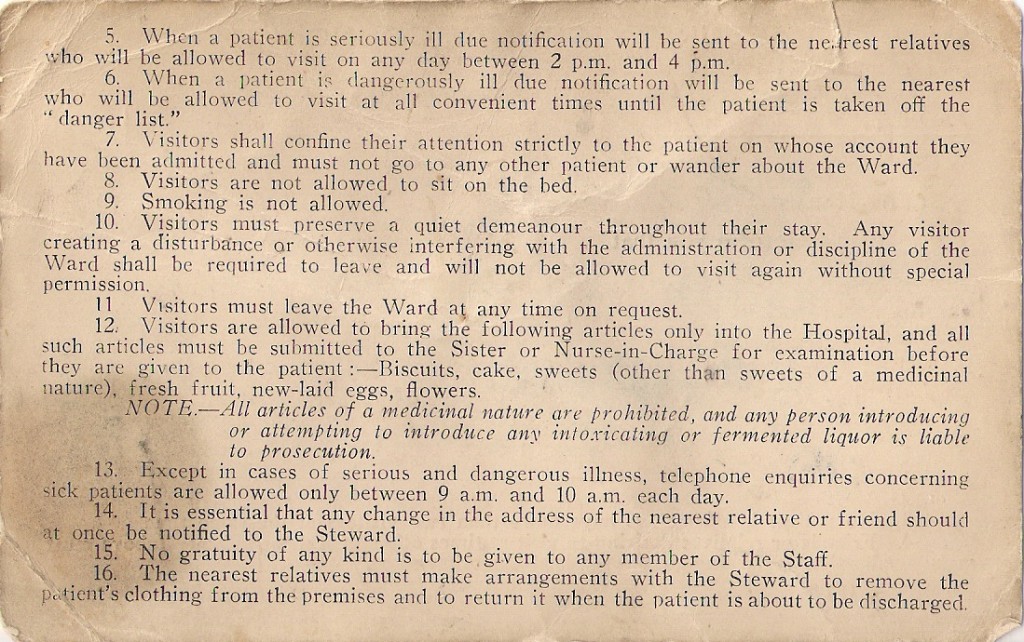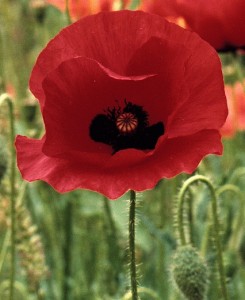Visiting a patient in the 1940’s was very different from today. Just take a look at this
Category: Archive
Remembering those from WW1
As we remember those who perished fighting the war, SLHHP would like to specifically remember those who were brought from the front line to the Guildford War Hospital, Warren Road.
In 1916, Warren Road Hospital was taken over by the military to treat wounded soldiers from the front.
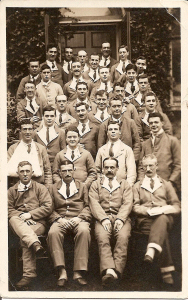
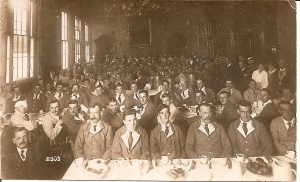
Australian soldiers were also treated here….some never came returned home. One such soldier was Private Francis Arthur Boyle of Queensland Australia. Boyle signed up to the 17th Battalion on the 18th January 1916 and fought in Belgium and France in the same year. By November, he was severely wounded – gut shot wound – and brought to the War Hospital here in Guildford. Sadly, he died of his injuries on Sunday 31st December 1916 and was buried at Stoughton Cemetery four days later. The sister in charge of the ward where Boyle lay was Linda Bell, and he’s what she said of his last days:
” He was unconscious for days before his death and died quite peacefully, his sister-in-law present. He was buried with full military honors in the Stoughton Cemetery, his sister-in-law attended. As I hope to leave for Australia and come from the same town as the late Pte Boyle, I intend to call and see his people…”
Her letter shows the compassion shown by the nursing staff at the hospital. Bell, herself was an Australian national, had seen her own share of tragedy when, on her way to Cameroon in 1915, the ship she was sailing on sunk at sea, drowning her colleague. Bell was saved but she lost everything. Despite this, she courageously sailed again soon after. An article which appeared in the British Journal of Nursing (April 1915) detailing her tragic voyage, stated “She evidently possesses the qualities necessary for war nursing,” and we’d have to agree.
A surprise visit from Spain
The phone rang
” Good afternoon the Spike”.
” Kay, I’m outside. I’ve got a couple here from Spain who say they used to work at the hospital. Will you interview them for the project?”
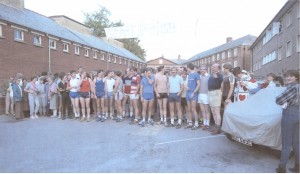
Mr and Mrs Fariira worked at St Luke’s Hospital in the early 1970’s as cleaners and had fond memories of their time here as their son was born in the maternity unit.
Mr Fariina said, ” I worked in the laboratory and the cancer unit. Mrs Atkins was the main boss. We worked long hours with only one hour break! In the cancer unit, I cleaned and served hot drinks and breakfast to the patients – toast, eggs, bacon, no beans! It was a very good breakfast!”
Mrs Fariina worked on the maternity ward. “The people were very nice” she remembered. I asked about the food, “Yes, they seemed to like the breakfast – the milk was very nice!” she said. “My son was born here. I received a BIG bunch of flowers from the hospital staff,” she smiled. “I stayed 15 days in the maternity because we had no family over here. The main nurse was very friendly.”
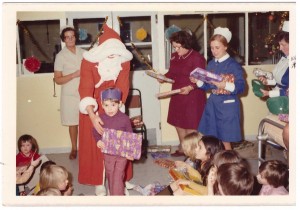
Helen Lloyd and the WVS in Surrey
In 1938 when the Woman’s Voluntary Services were established, Helen Lloyd, a 39 year old resident of Albury, where she lived with her parents, volunteered to take charge of the reception of evacuees in the Guildford Rural District. We are able to discover a great deal about her ever widening responsibilities for the WVS through the diaries she wrote for the Mass Observation Archive.
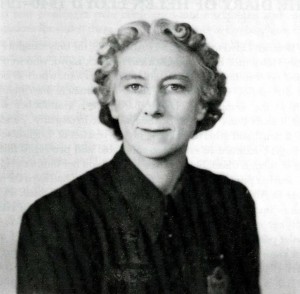
From 1939 till 1940, 1100 evacuees arrived in the Guildford Rural District, many in 1940 having been moved from the south coast where they had first been housed. Apart from the logistics of finding homes for the children, Helen commented in her Narrative Reports to the WVS headquarters that Enuresis (bed-wetting) was a severe problem for families taking care of the children. Many solutions were suggested throughout the country, such as not allowing children to pick dandelions, but Helen believed, “All that is needed is a legion of old-fashioned nannies who love the children dearly but who stand no nonsense from their charges.” She may have followed this herself for she remarked in her diary that she had happily replaced a bath and a drink before dinner with a session reading a story to the four boys residing with her family.
The WVS centre for Guildford Borough was organised by Mrs Eileen Leach, but Helen’s base was also in Guildford and she had regular meetings with Mrs Leach.
Though not specifically connected with Warren Road Hospital, Helen often went there in her role as WVS district organiser. Her diary entry for
June 15th 1940
“Took a car full of teapots and cruets to Warren Road Hospital. Mrs Thomas objected to appeals being made for the hospital as it made public the fact that it was badly equipped – which of course was the case.”
October 26th 1940
“To Warren Road Hospital to give blood. Had to wait 40 minutes but enlivened the time by gossiping with Mrs Cooper who was taking records. The operation was extremely simple and I felt ashamed of having a fluttering head. The doctor was charming and I admired and wished to emulate his bedside manner.”
Helen was concerned that the London boroughs made no attempt to forward the children’s medical records or spectacle prescriptions , but the main medical concerns were obvious.
December 30th 1940
“Had to take two of Mrs Strachey’s children to Warren Road Hospital with impetigo and nits!”
January 31st 1941
“Eight cases of scabies and nowhere to put them; 3 measles contacts and no billets; an expectant mother imminently expecting; a child admitted to Warren Road for impetigo has measles there and no-one is told; a second child of Mrs Strachey’s has scarlet fever though the school doctor pronounced it to be nothing.”
The highlight of June 1940 was the arrival at Guildford station of men evacuated from Dunkirk. Mrs Leach was in Helen’s office organising food for the trains when there was a message for them to go to the station as soon as possible. There they found chaos as train after train of hungry and thirsty English, French and Belgian soldiers stopped en route from the south coast. “The waiting rooms on the platform were transformed into larders and pantries and were filled with people cutting sandwiches. Churns of hot tea ladled into tins, jam jars, anything that would serve as a cup.” For four days the WVS continued to serve the soldiers with the, “enthusiastic support of Guildford tradesmen willing to be knocked up at all hours to give goods at a discount of sixty per cent.”
After Dunkirk, the Guildford scheme was instigated, “Whereby we shall keep a list of lodgings, free or otherwise, for the wives and relations of wounded (servicemen) on the danger list. These people are, if necessary to be met at the station and taken to the hospital or billets.”
Meanwhile the rural WVS were to supply ashtrays, handkerchiefs, drinking beakers, books and games for the injured soldiers at Warren Road Hospital.
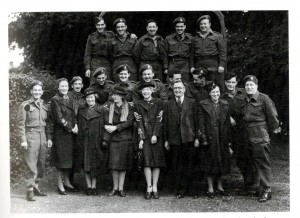
On one occasion Helen recorded that a family had been sent from Bristol because the husband was dying of cancer at Warren Road Hospital. His wife and six children were sent to Ockham Park which made it impossible for them to visit the hospital so she persuaded the Billeting Officer to find them a council cottage in Shackleford.
Later in 1941 Helen Lloyd reported that 3 bombs had dropped near to Warren Road Hospital killing 2 people, injuring 9 and making 200 homeless. In October 1941 a British Restaurant was opened in Charlotteville. This was a communal feeding centre, a cafe where a full hot meal could be purchased for one shilling, served and washed up by the WVS. At the same time WVS members were knitting scarves, helmets, socks, sweaters and gloves. By 1941 almost 3,000 children had been evacuated to the 22 parishes in Helen’s Rural District. In January 1942 when there was thick snow on the ground, Helen skied into Guildford from her home in Albury.
In June 1942 there were 542 WVS members in Guildford Rural District and 1,005 in the borough of Guildford. An editorial in the Surrey Times of 29th October 1943 expressed the opinion that, “While the grey uniforms of the members of the WVS are seen mingling among the crowds in our streets, few of the public are conscious of the valuable work they undertake.”
Article by SLHHP researcher Liz Lloyd
Resources
“Warriors at Home 1940-1942” edited by Patricia and Robert Malcomson
“Women at the Ready: The remarkable story of the Women’s Voluntary Services” by Robert and Patricia Malcolmson.
The Surrey History Centre, 130 Goldsworth Road, Woking, GU21 6ND
What is a patient?
What is a patient – by D. M. Banks
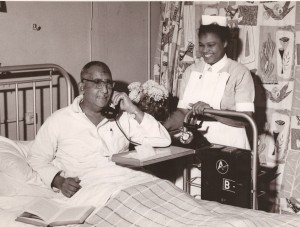
Patients come in all assorted sizes, weights and colours, but all patients have the same creed: to enjoy every second of every minute of every hour of freedom before the dreaded words “confined to bed” take effect, and to protest with noise, (their only weapon), when their last minute is finished.
A patient is Hope with despair in his eyes, Courage with fear on his face, Bravado with apprehension in his restless hands.
When you are busy, a patient is inconsiderate, bothersome and an intruder. When you want to give him your attention he is sleepy, aggressive and unco-coperative. Given time, he can become spineless as a jelly fish, stubborn as a mule, savage as a jungle creature. He can possess the curiosity of a cat, the shyness of a violet, the innocence of a new born baby, the self-assurance of a teenager or the audacity of a middle-aged business man.
Nobody else wants so many different things in the course of one hour. Nobody else has such a vivid imagination. Nobody else is so ignorant on the subject of his own person. Nobody else so heartily dislikes milk puddings, draughts, washing, lights on, lights off, bed making.
A patient is a complex creature. You can go off duty hating him but you cannot forget his troubles. You can lock him out of your heart but you cannot lock him out of your work. Might as well give up – he is there and whilst there, he is your captor – a whining, complaining, aggressive, exasperating thing. But when you come on duty in the morning, with only the treasured memories of your evening off to keep you going, he can make your task lighter with his welcoming smile or friendly greeting.
– St Luke’s Hospital and Social Club Magazine (March 1962)
